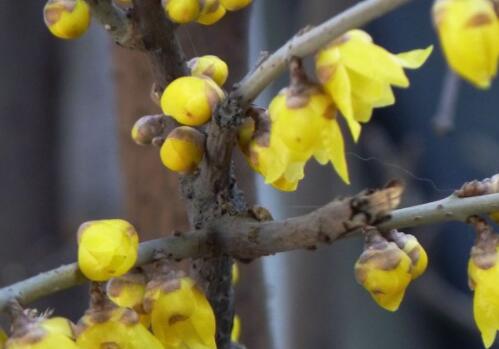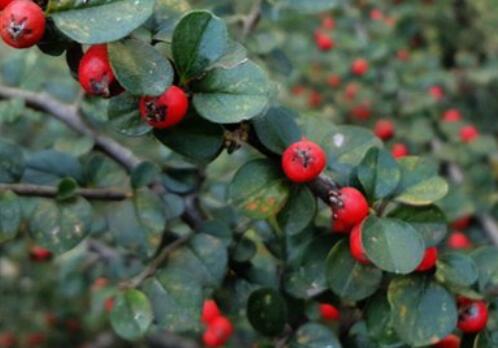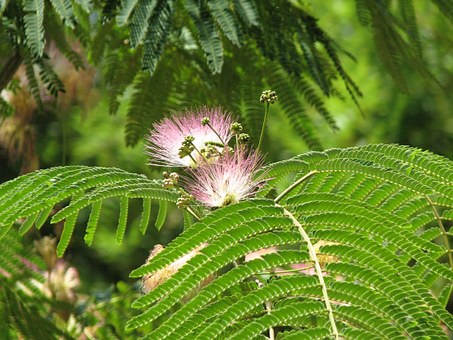Can deciduous shrub Chimonanthus frutescens be cut? How long does it live? When will it blossom? What are the grafting cultivation techniques?
Vegetarian Chimonanthus, also known as Chimonanthus praecox, is a deciduous shrub, up to 4 meters high, often clustered. The distribution area is Chinese mainland, Korea, Japan, Europe and America. Can the vegetarian preserved plum be cut? How long does it live? When will it blossom? What are the grafting cultivation techniques? According to the data of Chimonaceae, the flowering period of Prunus mume is from November to March of the following year, and the fruit period is from April to November.

Can vegetarian preserved plum be cut?
Vegetarian Chimonanthus can be cut.
The cuttage of Chimonanthus mume should be carried out when the sap has not yet flowed after the flower fade in spring. At this time, nutrients are more sufficient, you can select annual strong branches, cut into 15murmur20cm long, and cutting with heel.
How long is the lifespan of vegetarian preserved plum?
When Chimonanthus przewalskii grows in a good environment, its life is very long, and it is very common for Chimonanthus trees to grow for decades.
What are the grafting cultivation techniques of Prunus mume?
1. Grafting in spring when the buds of rootstock begin to sprout in spring, the scion should choose the thick and strong branch in the upper part of the superior variety, and the middle part of the branch is the best. The scion is wax-sealed before grafting, and the grafting method can be determined according to the interface size of the rootstock. If the joint of the rootstock is thick, skin grafting can be used.
2. The shoots are split from May to July, and when the new shoot of the rootstock grows to a certain thickness, it can be truncated from the top after leaving 1 or 2 pairs of leaves, and split into two from the middle of the stem to 2 cm in length. The scion takes the new shoot with strong growth, intercepts the part that is equal to the thickness of the rootstock, leaves 2 leaves at the upper end, cuts off most of the leaves, retains 1 blade 3, and cuts the lower 2 cm of the leaf into a wedge. Then insert the scion into the split of the rootstock. Because the two sides have the same thickness, the cambium on the left and right sides can be connected. Then the grafted site is tied up with plastic strips. Be careful to keep the leaves of the rootstock under the interface. After connecting, put on a plastic bag to moisturize. Shade when you are exposed to the sun. After 15 days, the scion can live, and then remove the plastic bag.
3. Grafting should be carried out when the rootstock and scion are growing vigorously in May. Generally use ramet seedlings or seedlings as rootstocks, need to be planted in flowerpots, and can be fixed on the branches of scion trees when grafting. The grafting method is based on the grafting method. During the operation, the interface does not need to damage the xylem. Both the rootstock and the scion cut off a piece of bark 3 to 5 cm long, and the width should be suitable for the cambium outside the xylem to connect. After that, tie up the joint with a plastic strip. Pay attention to often watering the rootstock basin. It can survive by 100%, but it takes a lot of work. One month after the graft survived, cut off the rootstocks on the interface. At the same time, the scion should be cut off below the interface three times, each time one beat three times, and once every seven days, that is, 50 days after grafting, before the scion leaves the mother.
4. Multi-head grafting must be carried out for larger rootstocks. In addition to the grafting method described above, the scion can be grafted at the top of the branch, and the lower branch can also be supplemented by abdominal grafting (see figure 6-17). After long-end grafting, special attention should be paid to removing the sprouting of rootstocks. Because with this rootstock, its rootstock and scion branches and leaves are similar, it is easy to confuse each other, so it must be clearly distinguished when removing sprouting. Because the growth potential of the tiller of the rootstock is stronger than that of the scion, the scion is easy to die because of the tillering and growth of the rootstock. Therefore, the sprouting on the rootstock must be removed in time to avoid graft failure.
Cultivation techniques:
1. Open field planting
Select neutral or slightly acidic sandy soil with deep soil layer, shelter from the wind and good drainage, which is generally planted before sprouting in spring. The seedlings were planted at the row spacing of 30 cm × 50 cm, and the medium seedlings of 2-3 years old were planted at the row spacing of 50 cm × 55 cm. The large seedling tree holes planted in the garden are 60-70 cm in diameter and 40-50 cm deep; the bottom of the hole is filled with rotten barnyard manure and bean cakes as base fertilizer, and after covering a layer of soil on the base fertilizer, the wintersweet plant with soil balls is put in, filled, stamped and watered.
2. Potted plants
Choose loose, fertile and well-drained sandy soil as cultivation soil, put a layer of gravel on the drainage hole at the bottom of the basin or cylinder, select small plants with full buds in the early winter of each year, dig them up with soil, plant them in the basin, and display them after flowering. Usually put it outside in a sunny place for maintenance.
Time: 2019-04-08 Click:
- Prev

Can the fruit of Pingzhi Xunzi be eaten? How to keep bonsai? How to water and trim? What if the leaves turn yellow?
Pingzhikuzi, also known as Lycium barbadense, Lorangzi, and hilltop girl, was born in bushes at an altitude of 2000-3500 meters. Flowering from May to June and fruiting from September to December. Can the fruit of Pingzhi Xunzi be eaten? How to keep bonsai? How to water and trim? What if the leaves turn yellow?
- Next

Will mimosa, King of hedges, blossom? When will it blossom? Will you die after blooming? How can it blossom?
Mimosa, also known as Mimosa, Mimosa, Shoushu, Mimosa, is a common flower in China, which is widely cultivated because it is easy to survive and has high ornamental value. Will Mimosa blossom? When will it blossom? Will you die after blooming? How do you raise it? It will blossom
Related
- Fuxing push coffee new agricultural production and marketing class: lack of small-scale processing plants
- Jujube rice field leisure farm deep ploughing Yilan for five years to create a space for organic food and play
- Nongyu Farm-A trial of organic papaya for brave women with advanced technology
- Four points for attention in the prevention and control of diseases and insect pests of edible fungi
- How to add nutrient solution to Edible Fungi
- Is there any good way to control edible fungus mites?
- Open Inoculation Technology of Edible Fungi
- Is there any clever way to use fertilizer for edible fungus in winter?
- What agents are used to kill the pathogens of edible fungi in the mushroom shed?
- Rapid drying of Edible Fungi

